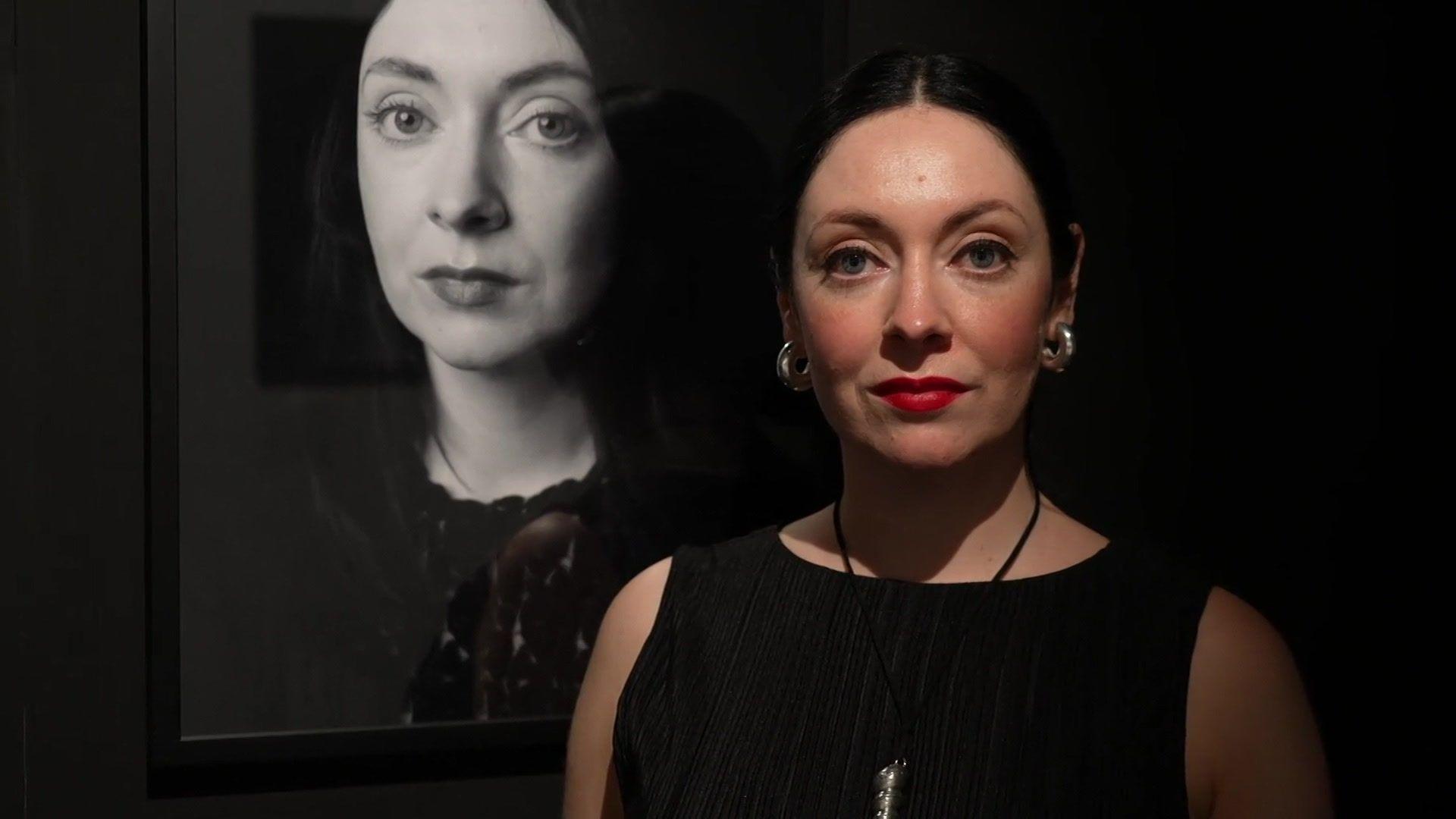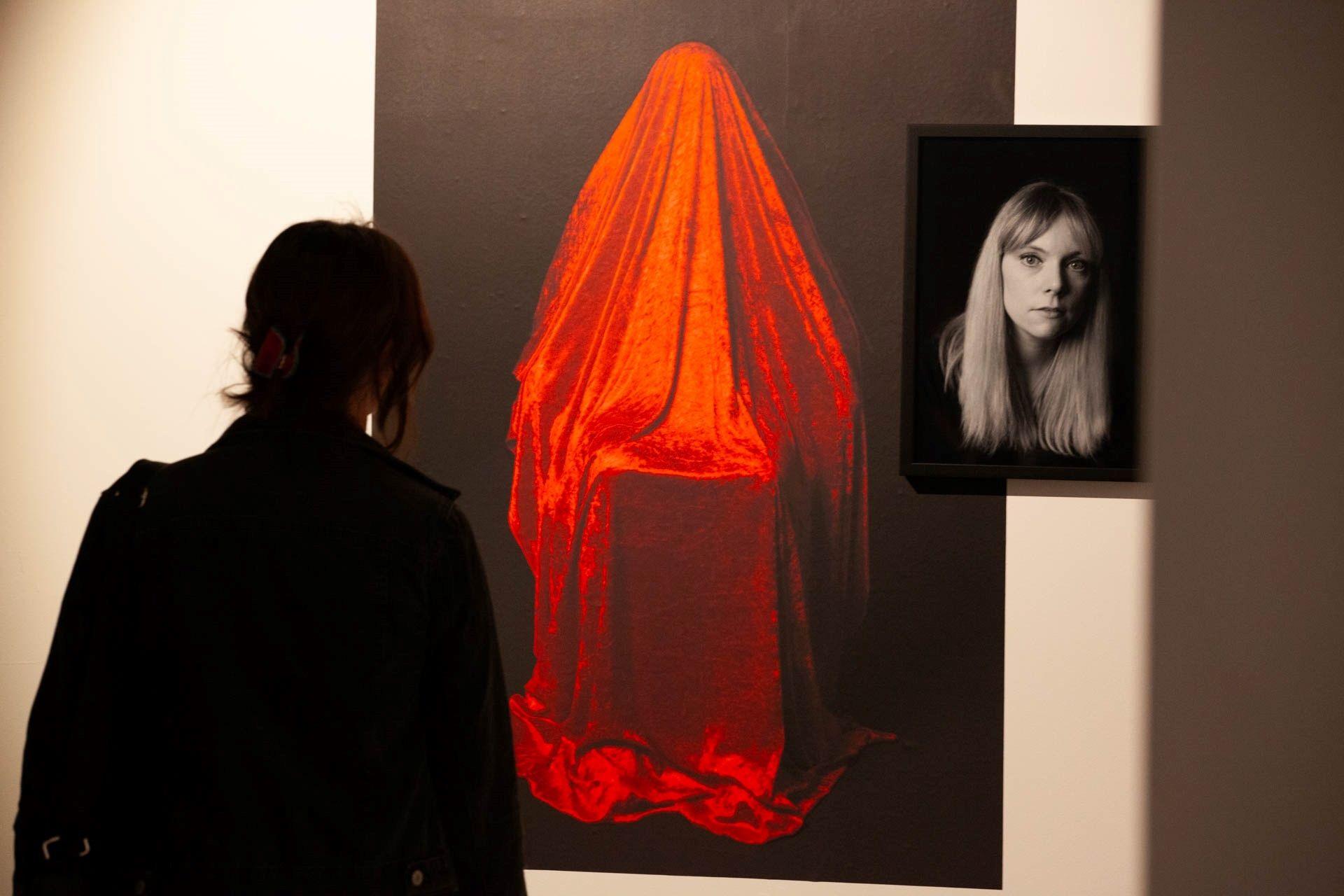'I'm bringing women's stories out of the darkness'

Clare Hughes is expecting her second child
- Published
"People are suffering, we're losing babies, we're losing mums: this is serious and we need to be taken seriously."
Photographer Clare Hughes, who suffered from hyperemesis gravidarum (HG) during her pregnancy in 2017, is speaking at the launch of her Hidden Mothers exhibition featuring portraits by expectant women.
Between one and three in 100 pregnancies, external are thought to be affected by HG, which can cause extreme pregnancy sickness, threaten the life of the foetus and require intravenous fluids in hospital to prevent dehydration.
"I wanted use my creativity, my photography, to make sense of what had happened to me during pregnancy," Ms Hughes says.

The exhibition runs until 14 June
"I couldn't really find any information," she said of the condition, which can lead to some mothers being sick up to 50 times a day throughout their pregnancies.
"The project has been a really cathartic experience - I've met so many other women who have gone through the same thing and understand exactly where I'm coming from so it has helped me immensely."
Victorian imagery provided the inspiration for the exhibition at the Science Gallery, part of King's College London, which she said had hundreds of women wanting to take part.
"It's called hidden mother photography, which is a Victorian approach to photography to get an in-focus picture of an infant.
"A mother was disguised as a piece of furniture to hold the baby in place while they could get an in-focus sharp image of the infant but what you're left with is quite a ghoulish, spooky imagery."

The technique is derived from Victorian photography
She added: "The visual metaphor of the hidden mother very much basically became a representation of what I felt as a sufferer of HG and what I know a lot of other women went through.
"We were basically hidden away in a darkened room, hidden away from the medical professions and that our symptoms were hidden.
"To see it all displayed, all the women's stories being heard and seeing us being brought out of the darkness and actually being seen, it's really moving and so touching and a privilege."
Listen to the best of BBC Radio London on Sounds and follow BBC London on Facebook, external, X, external and Instagram, external. Send your story ideas to hello.bbclondon@bbc.co.uk, external
- Published13 December 2023

- Published15 May 2019
- Published15 May 2019
